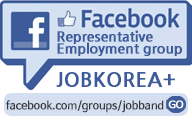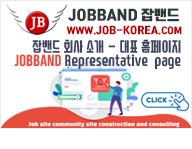 Data : 19-08-27 13:29
Data : 19-08-27 13:29
|
Steps to Create a Career Development Plan
|
|
|
author :
운영자
 Hit : 2,385
|
Steps to Create a Career Development Plan
A Career Path Is Crucial to Guide Employee Development
Four of the lowest rated seven conditions that must be present for employees to experience engagement were related to training, professional development, and career development. This shows that the growth and development needs of employees are not a typical priority in many workplaces. Yet, when employees identify the factors that they must have from work, career growth and development is one of the top five.
A career development plan is a win for employers and employees. The plan focuses on the employees’ needs for growth and development and the assistance the organization can provide so that the employee has the opportunity to grow his or her career. In addition to growing their career, employees are also interested in developing themselves both personally and professionally.
Creating a Career Development Plan
You can create career development plans with your employees by taking a few simple steps. For career development planning to be effective, expand your view of development and that of your employees. An outside training class is not the only way to develop employees. The development that is provided in-house is often more effective. Here are some ways to create a plan:
- Tell the employee that you want to meet with him or her to discuss career development plans and hopes. Ask the employee to think in advance about his or her options for growth and development and how they see their career unfolding in your company. Encourage the employee to think about how they’d like to see their careers progress.
- Suggest that the employee think about and come prepared to discuss these questions: What professional job or career growth goals does the employee hope to achieve within three years? What would the employee like to accomplish this year? Offer opportunities for the employee to consider as options to accomplish these goals.
- Prepare recommendations on what the employee can do to ensure that he or she is making progress on his career path. Determine and discuss resources and support the organization can provide so that the employee can accomplish his or her professional job or career growth goals.
- Determine what professional and personal goals will help the employee improve or develop great performance in their current job. What additional support can this organization provide so that the employee can accomplish these goals?
- Hold a meeting with the employee to discuss these questions and formulate a plan with the employee's involvement. Be flexible because the employee may have other avenues that he or she wants to discuss. As a manager, your job is to know all of the options available to the employee such as job shadowing, mentoring, and coaching on particular skills.
- Make sure that you're up to speed and can talk knowledgeably about all of the training and development options that exist for your reporting staff members. Many employees don’t consider development in any other sense beyond taking a class, and it helps to share with them all of the additional available options for training.
- Create and fill out a form that details the employee's career development plan and turn it into Human Resources for review, additional input, and filing.
Carrying Out the Plan
Employee development is a great concept but is not without issues. The best plans keep the responsibility for follow-through squarely on the shoulders of employees. Otherwise, if an employee does not complete his development opportunities, he may choose to place blame on management, which is counter-productive for all of the involved parties.
- Steer the employee in certain directions, but don't do the work for him. Make it the employee's responsibility to find a great class in listening if he's a poor communicator. If it turns out to be a poor choice, the employee’s responsible and if it doesn’t produce the desired results, cannot place blame on anyone else. Both the Human Resources department and a manager can help the employee explore his or her options, but the employee is ultimately responsible for the choice and follow-through.
- If the employee finds what he thinks is a great development opportunity, he is responsible for selling the company on the idea. Working with the experience of the HR staff to select excellent vendors and avoid low-quality development opportunities is the responsibility of the employee. HR has the experience the employee needs.
Things to Avoid in Career Development Planning
There are certain issues and statements that you would want to avoid as you and the employees who report to you create career development plans. A few types of issues can get in the way of an effective plan, such as:
- Guaranteeing or forming a contract with the employee by promising that the company will provide training or any other promised benefit. The best that you can do is to say that you will help however you can, but that the company growth, economic circumstances, priorities, and goals will have an impact on the employee’s desired developmental path, promotions, and career goals. Nothing is guaranteed.
- In states such as Michigan where laws are interpreted literally, you want to avoid statements that over-commit the employer. For example, at a small manufacturing company, HR put up a career opportunity bulletin board in the lunchroom. The company attorney advised them that the board implied that employees were promised careers and asked HR to call the board job opportunities board instead. Know your state and international governmental laws.
- The manager owning or having responsibility for carrying out the plan. The career development plan belongs to the employee. You can facilitate its pursuit, explore options with the employees, provide opportunities for the employee when possible, encourage the employee to have goals for growth and expansion of his or her career and skills, but you cannot do it for them. The employees must own their plan.
- Overcommitting your time or resources. As much as you are devoted to helping the employees who report to you grow, you have a limited amount of time available to help, in addition to the rest of your job. For example, unless you are already aware of a great class or resource, researching options for the employee to develop skills is not your job.
|
|



























